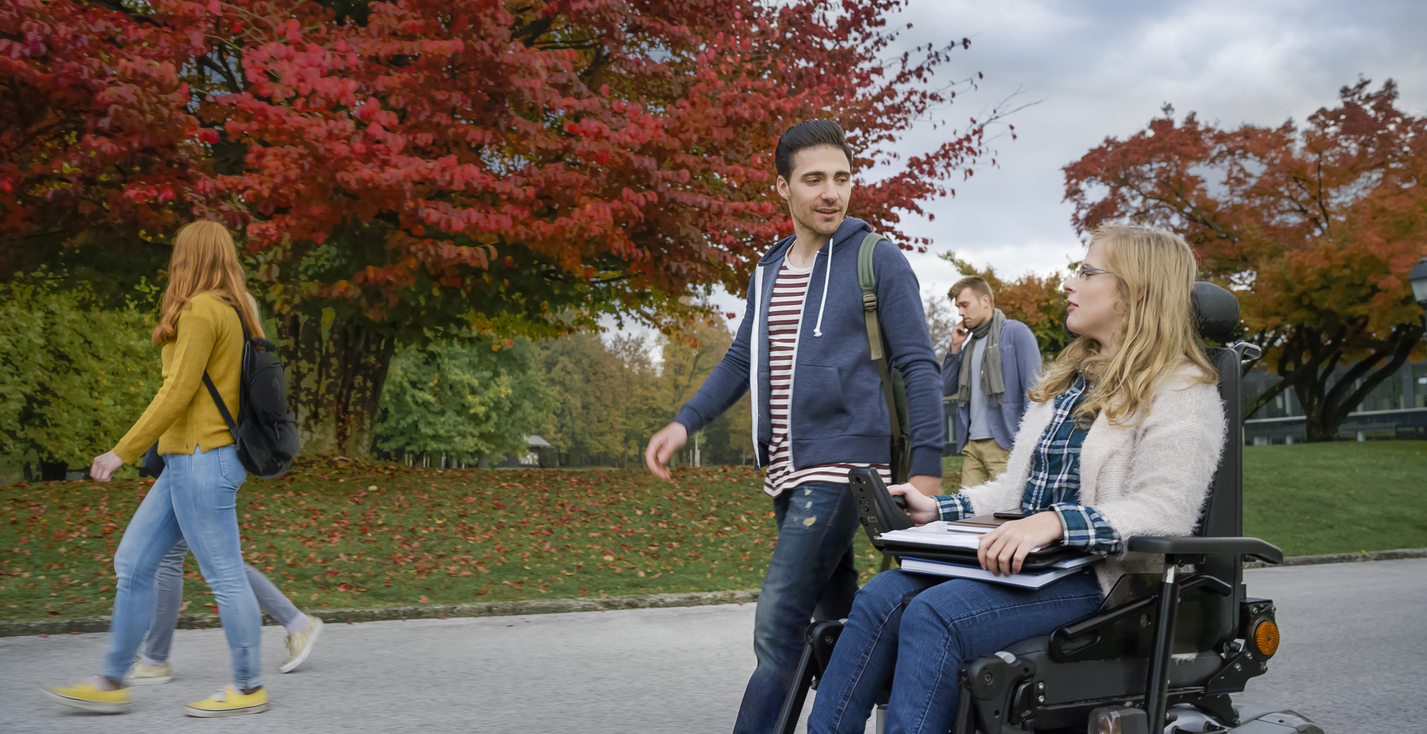We recently highlighted how your interactive campus maps should be digitally accessible.
As it turns out, your campus should be physically accessible as well, and students should easily find accessible resources. Consider these three tactics to create an accessible campus map and continue building your map’s usability for all audiences.
1. Highlight Inclusive and Accessible Resources
As with inclusivity resources, your accessible campus map can also include resources for users with disabilities. Consider the example of San Diego State University, whose ADA Accessibility Map category includes a few important sections for this user segment:
- ADA-compliant restrooms in all buildings and across campus
- Accessible building access locations, excluding any entrances that require climbing stairs
- Accessible elevator locations, allowing visitors and students with disabilities to safely move from floor to floor
- Pick-up locations with extra space to account for accessible vehicle entry and exit
- Sidewalks and walkways across campus where access for users with disabilities is dangerous or not advised
Of course, these are not the only resources you can or should highlight through your accessible campus map. But SDSU also communicates more than just the exact resources. By creating the category on its map, it clearly tells audiences, ‘Here, users with disabilities are welcome and embraced.’
2. Showcase Accessible Campus Routes
Of course, for students and visitors on campus, paths of access to and within buildings aren’t the only important pieces of information. They’ll also need to know exactly how to get across campus, whether it’s navigating from one building to the next or trying to find their way to an event location.
Fortunately, the right campus map can show more than just basic navigation without consideration of accessibility. A simple checkbox can trigger a layer that only shows the campus routes accessible for users with disabilities.
It’s a simple and quick way to get crucial information across to anyone, from event visitors to students just wanting to get to class. And once again, just as importantly, it’s an easy way to show that your institution cares about this audience and is doing everything in its power to optimize access in every way possible.
3. Help Audiences Navigate through Unexpected Obstacles
Finally, construction can make navigation and wayfinding more difficult. It makes usually accessible routes more difficult to navigate. A new building, water line replacement, or simple road maintenance can all make familiar and accessible routes impossible to predict. This leaves pedestrians with disabilities stranded on where to go next.
Once again, the right digital campus map setup can make all the difference in this type of situation. In addition to accessible campus routes, it can show current construction projects and detours around them. Combine the two features, and you get accessibility detours that might just become vital for your audience.
Southern Methodist University did just that when looking for a better way to showcase and improve its campus accessibility. Its new interactive map adheres not just to ADA guidelines but also to the needs and expectations of users with disabilities.
Building a More Accessible Campus Map
When it comes to making your campus more accessible, communication is almost as crucial as the actual accommodations provided. After all, how can your audience take advantage of these accommodations if they don’t know where the right entrances, bathrooms, or walkways are?
That’s what makes an accessible campus map such a vital piece of the larger accessibility equation. And that’s where Concept3D comes in, thanks to a solution designed to serve all audiences—including people with disabilities.
Ensure your university meets accessibility standards. Request an accessibility audit today and get expert insights on how your digital content aligns with WCAG 2.1 Level AA.

